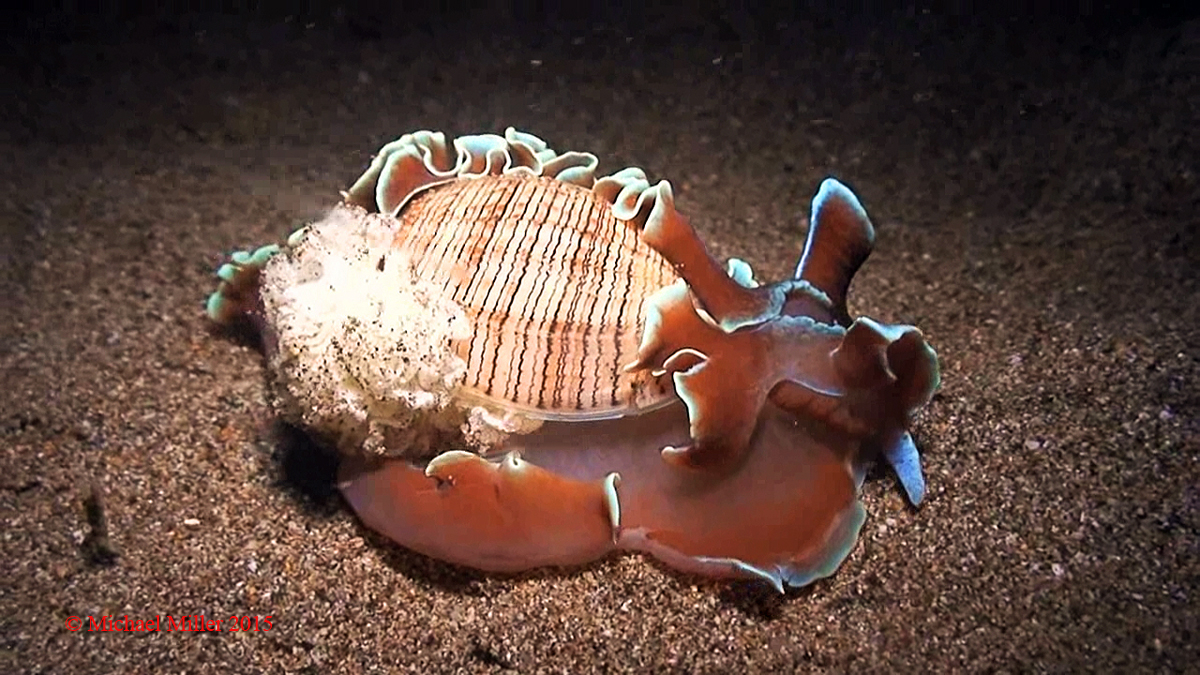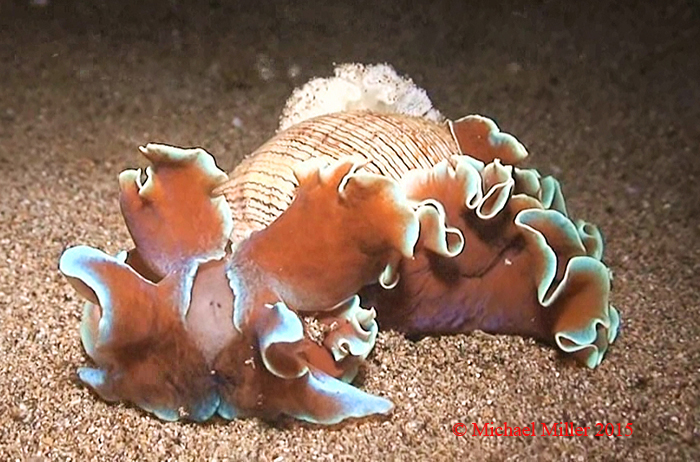 |
Hydatina physis
Image courtesy of Michael MillerAnilao, Batangas, Philippines
Freeze Frame from Video
2015
Image courtesy of Michael Miller (Webmaster)
 | Hydatina physis (Linnaeus, 1758)
Hydatina physis is one of the oldest opisthobranchs ever named for science (see BOW 745). Living circumtropical, this species exhibits some interesting reproductive behavior. Observed numerous times by divers around the world, and seen here in Mike's photo, H. physis, on occasion, lays its egg ribbon directly onto the posterior portion of the slugs shell. One might ask why - go ahead - I don't know. It carries the eggs in this manner for some time, only depositing them when suitable substrate is found. As Bill Rudman points out on his Sea Slug Forum, this behavior is rather different from most opisthobranchs which cement the egg ribbon down as it is being laid. His Forum contains examples from Sagami Bay, Japan and Lord Howe Island, Australia. My only question is - since opisthobranchs are known to store sperm, delaying fertilization and egg production, why doesn't the slug just wait for optimal substrate and go through the process when it finds it. Then again, since the shell egg placement strategy seems to be very efficient - why don't all individuals of H. physis carry their eggs on their shell? Maybe their burrowing behavior rules this out. Food for thought. Nice find Mike.
Sammamish, WA 98074 Apr. 2020 Send Dave email at davidwbehrens@gmail.com |

Attention all you Sluggers, and you know who you are! The NSSI 2nd edition is available in ebook PDF and book form . The hard back version will become available Nov. 1st. Both will cost $65 (individually). You will need to jump through a few hoops to get the electronic version as pdf distribution is protected by Adobe ID!! Please read the following to enable reading your electronic purchase! This new 2nd Edition is updated and reorganized, including 185 new species. Among other features, the new edition includes additional photographs of species, an identification key, and an up-to-date classification reflecting the latest evolutionary relationships. The Indo-Pacific represents the largest expanse of tropical ocean in the world, stretching from the Indian Ocean coast of southern Africa and the Red Sea to the central Pacific of the Hawaiian Islands, Easter Island and the Marquesas. This region supports the most diverse marine fauna of any place in the world for most groups of marine organisms. The nudibranchs and sea slugs are no exception to this rule; there are about 3,000 described species of these organisms in the world and at least 40% of these have been found exclusively in the Indo-Pacific tropics. This book illustrates 2,138 Indo-Pacific nudibranchs and sea slugs, including many undescribed species.
|
